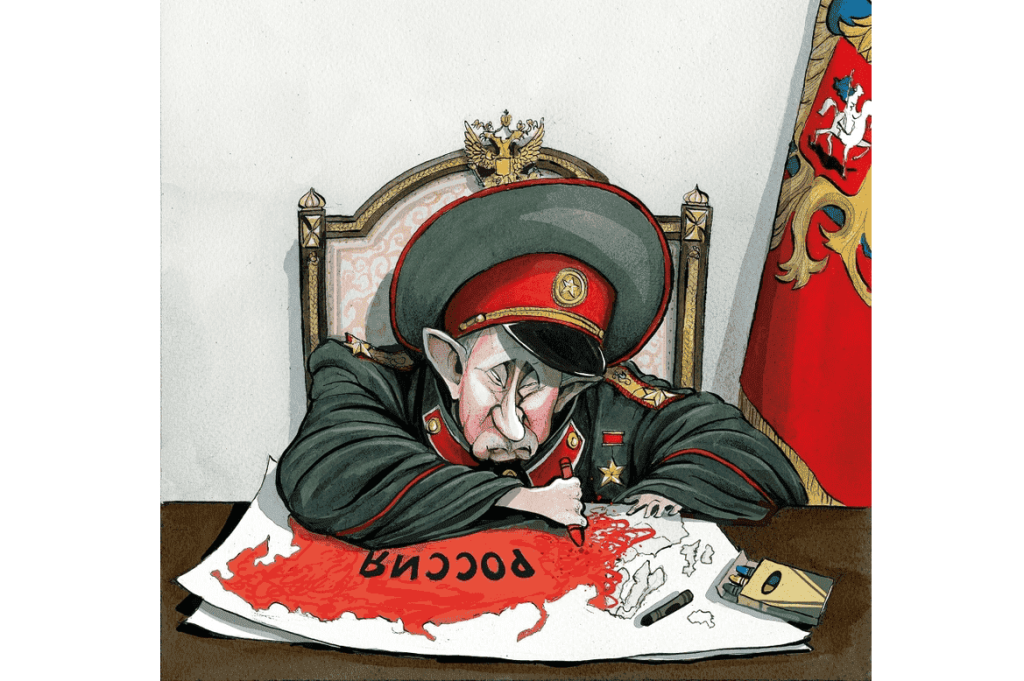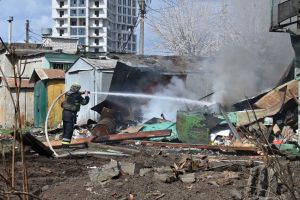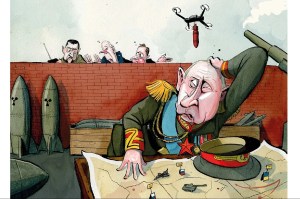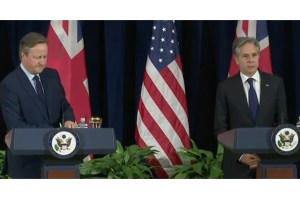The Russian army has been the source of an endless list of shortcomings and embarrassments over the last eight months. There are simply too many of them to count, from the failure to move through Kyiv’s suburbs in March to the sinking of the flagship Moskva in April to the loss in September of more than 3,000 square kilometers of territory in just days.
But by far the most humiliating to Vladimir Putin personally was last weekend’s attack on the twelve-mile bridge that connects mainland Russia with Crimea, the peninsula Moscow annexed in 2014. That bridge, which cost more than $7 billion to build, was one of Putin’s pet projects, a visible signal to the world about Moscow’s staying power in the region. Putin himself made a big deal about the bridge’s formal opening in 2018, driving a large truck across the multi-lane structure.
So when Putin learned of the attack, which was reportedly carried out by a truck rigged with explosives, he called a special meeting of his national security council and labeled it a terrorist act purposely designed to weaken Russian infrastructure. The attack, assuming it was conducted by the Ukrainians, was indeed bold, and it could cause the Russians some serious logistical headaches. The bridge was the safest and most direct route for military supplies into Crimea, a staging point for the Russian military’s operations further north in Kherson. That same area is currently a major front in the war, with Ukrainian troops slowly recapturing territory after months of offensive operations (and high casualties). The Russians need the bridge if they are to have any chance of holding the only provincial capital they currently occupy. The alternatives — crossing the Black Sea with ferries or loading weapons onto trucks and driving them through eastern Ukraine, where artillery fire is rampant — are hardly viable.
In the past, the Kremlin has sent signals to the Ukrainians that targeting the bridge would be a red-line event, akin to targeting the heart of the Russian Federation itself. This isn’t the first time Moscow has bandied about these kinds of threats, hoping it would have a deterrent effect on Ukrainian operations.
Kyiv, however, isn’t listening. Similar tough talk from the Russians haven’t been matched by actions. Indeed, Ukraine has targeted Russian military bases in Crimea and launched sabotage operations inside Russia numerous times in the past, and the response from the Kremlin has been quite muted (Russia’s FSB intelligence agency released an assessment over the weekend claiming that Ukrainian cross-border shelling into Russia has “significantly increased” this month, although one ought to take FSB allegations with a giant grain of salt). With so many Russian threats having been rendered fruitless in the past, Ukrainian president Volodymyr Zelensky and his administration may have concluded that destroying, or at least damaging, Putin’s favorite bridge wouldn’t draw much blowback. It’s not an unreasonable assumption to make; if you repeatedly draw a line in the sand but fail to enforce it, the credibility of your threats rapidly diminishes.
The Russians didn’t wait very long before responding. On October 10, seventy-five Russian missiles were launched against ten Ukrainian cities simultaneously, from Zaporizhzhia in the east to Lviv in the far west. Kyiv, which witnessed so much devastation in the first months of the war but has since returned to some normality, was hit by multiple strikes for the first time in a long time. Children in school were forced to scramble into shelters. Subway trains were stopped as air raid sirens blared. Kyiv National University in the central part of the capital was reportedly targeted, as was Shevchenko Park, a popular area for the city’s residents. Kharkiv, Ukraine’s second most populous city, saw some of its power cut off as Russian attacks destroyed electricity and water supplies. In Sumy, a city about 115 miles to the northwest of Kharkiv, power was lost. At least 10 people were killed in the attacks.
The simplest course of action would be to tie all of these strikes to Putin. This is a man, after all, who doesn’t believe Ukraine is a legitimate state and whose forces have committed ghastly war crimes.
But this explanation isn’t sufficient. There is something more tactical going on here. Putin may be attempting to shock his enemies into submission, or at least deter Kyiv from conducting similar operations like the one that drove part of the Crimea bridge into the sea. He also wants to ensure that future threats are taken seriously, and this won’t be the case if the Ukrainians continue to step over them without a second thought.
The strategy is unlikely to succeed. The large-scale missile strikes will have a galvanizing impact, but not in the way Putin hopes. Ukraine’s supporters in the West won’t take kindly to these kinds of dramatic assaults on residential neighborhoods. The Russian strongman is in a pickle of his own making — don’t retaliate and be exposed as feckless, or retaliate harshly and watch as the US and Europe solidify their assistance to Ukraine.


















